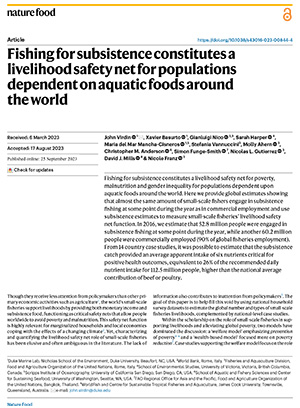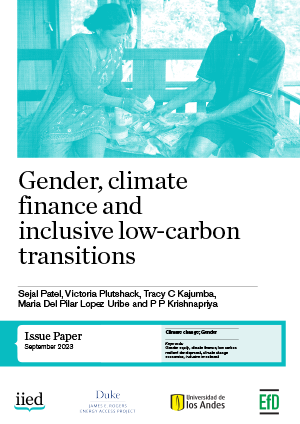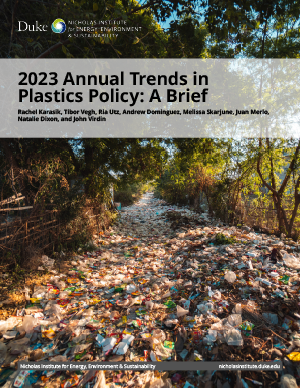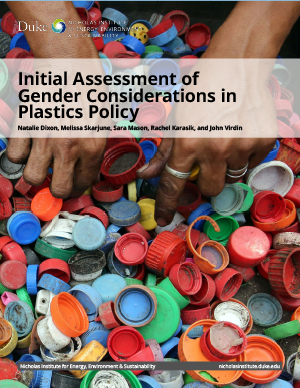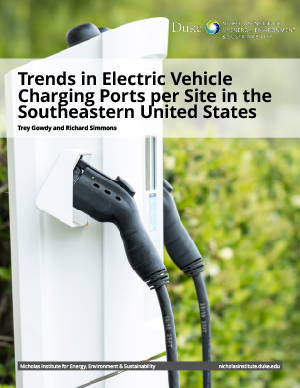Publications
The State of Blended Finance 2023: Climate Edition
This year’s edition of the State of Blended Finance published by Convergence once again focuses on climate. Climate change continues to be central to the blended finance market and to sustainable development more broadly. Jackson Ewing, director of energy and climate policy at the Nicholas Institute, and Jonathan Phillips, director of the James E. Rogers Energy Access Project at Duke, were among the experts and stakeholders interviewed for the report. Ewing and Phillips offered insights on Just Energy Transition Partnerships as a partnership model for mobilizing climate blended finance.
Carbon Pricing Leadership Report 2022/23
The annual Carbon Pricing Leadership Report complements the Carbon Pricing Leadership Coalition’s advocacy and networking activities by elevating thought leadership in the mitigation arena and sharing how partners across all sectors are putting a price on carbon and engaging in carbon markets to reduce their emissions. Jackson Ewing, director of energy and climate policy at the Nicholas Institute, contributed to the report with an opinion piece titled "Stakes Increase as Voluntary Carbon Markets and Climate Finance Converge."
Fishing For Subsistence Constitutes a Livelihood Safety Net for Populations Dependent on Aquatic Foods around the World
Fishing for subsistence constitutes a livelihood safety net for poverty, malnutrition, and gender inequality for populations dependent upon aquatic foods around the world. Here, the authors provide global estimates showing that almost the same amount of small-scale fishers (52.8 million people) engage in subsistence fishing at some point during the year as in commercial employment (60.2 million people). The authors also use subsistence estimates from 14 country cases studies conducted as part of the Illuminating Hidden Harvests study to measure small-scale fisheries’ livelihood safety net function.
Gender, Climate Finance and Inclusive Low-Carbon Transitions
Climate change will have significant long-term impacts on people, ecosystems and the global economy. To avoid catastrophic impacts, the world must mobilize finance at scale to deliver rapid and substantial low-carbon transitions across sectors and regions. Improving sustainable finance approaches and enhancing market alignment with this transition is crucial. Evidence shows that climate finance is not reaching those who need it most. Despite the significant climate risks faced by women and girls, only 2.3% of climate finance intends to principally support gender equality. Low-carbon transitions must be designed with proper understanding of contextual gender inequalities.
2023 Annual Trends in Plastics Policy: A Brief
In the first annual update of Annual Trends in Plastics Policy, Nicholas Institute researchers find that plastics policy enactment continues to surge and was not negatively affected by the COVID-19 pandemic. To better gauge policy implementation, researchers established a new effectiveness policy library to accompany the 2022 update. These studies indicate that, while underused in existing policy, greater governmental use of economic instruments (e.g., taxes, fees, levies) and information instruments (e.g., awareness campaigns to communicate other instruments to the public, education initiatives, etc.) would aid in enacting effective policies in the future.
Initial Assessment of Gender Considerations in Plastics Policy
Globally, women are disproportionately burdened and impacted by the harmful effects of plastic across the life cycle of products. These burdens vary across cultural, socioeconomic, and political contexts, and based on how women engage with plastic, but broadly include health and safety impacts, access to opportunities in the waste sector, and exposures to harmful plastic-associated chemicals. This initial assessment considers how women, people who are assigned female at birth and have been socialized as females, and/or female-identified people are considered in plastics policy scope and implementation.
Strengthening Supply Chains for US Decarbonization
The 2022 Inflation Reduction Act provides new sources of capital and incentives for accelerating net-zero efforts. The law concurrently seeks to shift supply chains vital for US decarbonization to domestic sources and, more selectively, to links with free-trade partners. However, challenges abound. This policy paper responds by exploring opportunities inherent to rapidly creating just, low-carbon, and sustainable supply chains for key sectors of the US economy.
This report is part of Keys to the US Energy Transition: An Energy Pathways USA Series.
Cleaning Up without Messing Up: Maximizing the Benefits of Plastic Clean-Up Technologies through New Regulatory Approaches
As the global plastics crisis grows, numerous technologies have been invented and implemented to recover plastic pollution from the environment. Although laudable, unregulated clean-up technologies may be inefficient and have unintended negative consequences on ecosystems, for example, through bycatch or removal of organic matter important for ecosystem functions. Despite these concerns, plastic clean-up technologies can play an important role in reducing litter in the environment.
Beyond FERC Order 2023: Considerations on Deep Interconnection Reform
In late July 2023, the US Federal Energy Regulatory Commission (FERC) released its much-anticipated rule on interconnection reform, Order 2023. This policy brief explores a deeper reform option known as connect and manage. This less restrictive interconnection approac could speed the deployment of resources in a way that can be managed after their integration with the grid, leading to a larger volume of interconnected generation capacity without sacrificing reliability.
Trends in Electric Vehicle Charging Ports per Site in the Southeastern United States
This report provides an overview of the market trends in electric vehicle (EV) charging ports per station across 12 Southeastern states based on an analysis of charging station characteristics over the last decade. As of 2022, we identify an average of 2.3 ports per Level 2 charging station and 4.6 ports per direct current fast charging (DCFC) station in the region. The observed trend in the Level 2 market has been consistent over the study period, whereas the more complex DCFC space is characterized by much greater variability.



